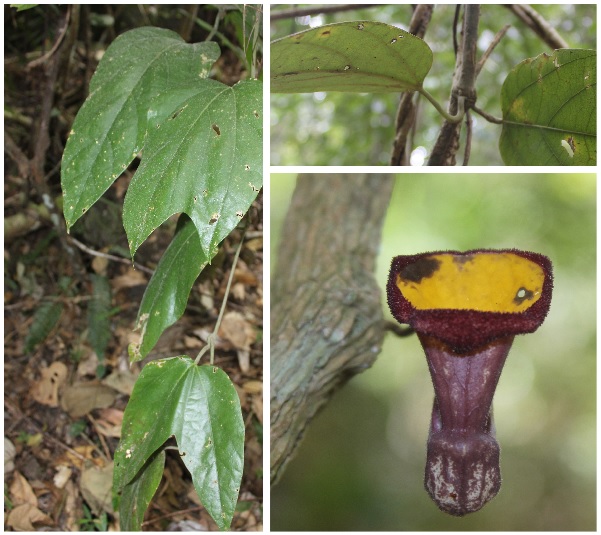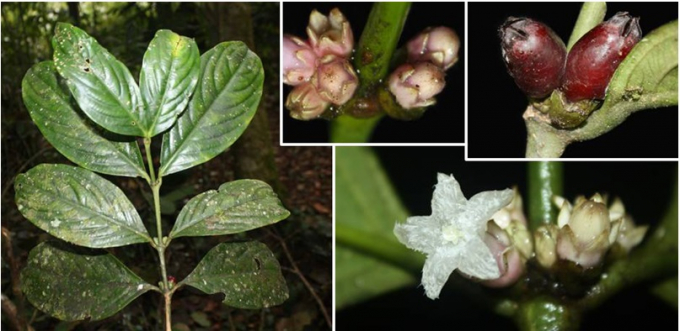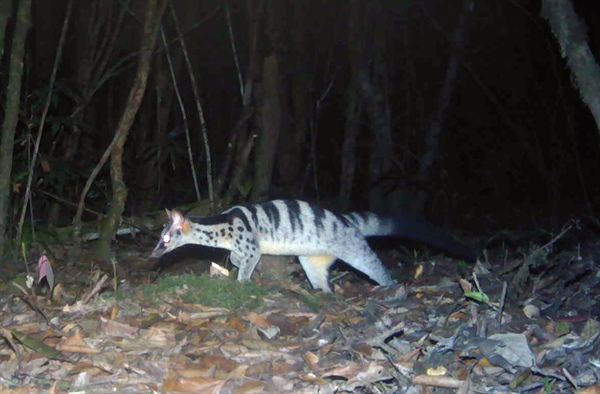Nature of Bidoup National Park – Nui Ba
LAM DONG – Ecotourism in Bidoup – Nui Ba National Park, visitors can learn about pterosaurs, cobras,
Domestic and international scientists have discovered many new, rare and endemic species in Bidoup - Nui Ba National Park (Lam Dong), namely:
Aristolochia neinhuisii Do (Moc Huong Neinhuis in Vietnamese). Photo: Do Van Truong (Vietnam National Museum of Nature).
+ Scientists from the Vietnam National Museum of Nature, the Institute of Genome Research (under the Vietnam Academy of Science and Technology) and Bidoup - Nui Ba National Park have recently discovered and recorded a new plant species as Moc Huong Neinhuis, with the scientific name of Aristolochia neinhuisii Do, and belonging to the Aristolochiaceae family.
+ Scientists from Da Lat University and Kyushu, Tohoku, Kagoshima universities in Japan have announced 3 newly discovered endemic stone chestnut species: Bidoup stone chestnut (Lithocarpus bidoupensis Ngoc & Tagane, sp. Nov); Hon Giao stone chestnut (Lithocarpus hon Giaoensis Ngoc & Binh, sp. Nov), Cong Troi stone chestnut (Lithocarpus congtroiensis Ngoc & Yahara, sp. Nov).
Species identification of Bidoup Xu Huong (Lasianthus bidoupensis V.S. Dang & Naiki).
+ Scientists from the Taiwanese Center for Plant Conservation, the Southern Institute of Ecology and Bidoup - Nui Ba National Park have discovered two new species including: Hon Giao Begonia (Begonia hongiaoensis C.W.Lin, T.C.Hsu&Luu,sp.nov.); Lam Dong begonia (Begonia lamdongiana C.W.Lin, T.C.Hsu&Luu,sp. nov.).
+ 02 new species belonging to the Tra my (Camellia) genus were published in international botanical journals: Tiny Camellia (Camellia flosculora Curry, VS Le, CQ Truong & VD Luong, sp.nov.) and Bidoup Camellia (Camellia bidoupensis Truong, Luong & Tran, sp.nov.).
+ Scientists from the Institute of Tropical Biology and the Center for Tropical Biosphere Research at the Japanese University of the Ryukyus have discovered a new plant species belonging to the Coffee (Rubiaceae) family: Bidoup Xu Huong (Lasianthus bidoupensis V.S. Dang & Naiki).
Albino porcupine. Photo: Bidoup National Park - Nui Ba.
+ Scientists from the Russian Federation, Vietnam and their colleagues announced the discovery of a new species of lizard belonging to the Gekkonidae family with the scientific name of Cyrtodactylus bidoupimontis; a new cockroach species known as Macrostylopyga bidupi; a new mushroom species known as Craspedodidymum seifertii in Jiangli area.
+ In addition, the Southern Institute of Ecology, Leibniz Wildlife Research Institute (Leibniz-IZW, Federal Republic of Germany) and Bidoup – Nui Ba National Park have cooperated in a survey of mammal species. Through the use of photographic traps, the scientists have discovered various new species including Chrotogale owstoni endemic to the Truong Son range; Giant muntjac (Muntiacus vuquangensis) - a species that was previously found only in the Truong Son mountain range and was subsequently classified as critically endangered (CR) in the IUCN red book; Sun bear (Helarctos malayanus); and albino porcupine - white porcupine, which is a very rare species to be found in the wild.
Chrotogale owstoni. Photo: Bidoup National Park - Nui Ba.
According to the World Bird Organization (BirdLife international), Bidoup - Nui Ba National Park is among the 221 endemic bird centers in the world. The National Park is a biodiversity conservation corridor with a very sparse area, adjacent to Chu Yang Sin National Park in Dak Lak and Phuoc Binh National Park in Ninh Thuan. It is also the center and core area of LangBiang World Biosphere Reserve, covering an area of 275,439 hectares.
According to different scientists, Bidoup - Nui Ba National Park still contains many new species of flora and fauna that have not been discovered. The National Park is a preservation center to store rich natural genetic resources, making a significant contribution to the biodiversity of Vietnam.
Translated by Nguyen Hai Long



